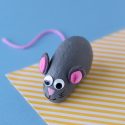

Monkeys were implanted with sensors to measure vital signs, and many were under anesthesia during launch. Numerous monkeys of several species were flown by the U.S.

Albert II died on impact after a parachute failure. Albert I reached only 48–63 km (30–39 mi) altitude Albert II reached about 134 km (83 mi).

Other V-2 missions carried biological samples, including moss.Īlbert II, a rhesus monkey, became the first monkey, first primate, and first mammal in space on 14 June 1949, in a U.S.-launched V-2, after the failure of the original Albert's mission on ascent. The Blossom capsule was ejected and successfully deployed its parachute. International 100 km definitions of the boundary of space. The rocket reached 109 km (68 mi) in 3 minutes 10 seconds, past both the U.S. The purpose of the experiment was to explore the effects of radiation exposure at high altitudes. The first animals sent into space were fruit flies aboard a U.S.-launched V-2 rocket on 20 February 1947 from White Sands Missile Range, New Mexico. 47 carried the first mammal, a rhesus monkey named Albert II, into space on J1940s high-altitude manned balloon flights occurred in the same time frame, one of which also carried fruit flies. These high-altitude balloon flights from 1947 to 1960 tested radiation exposure, physiological response, life support and recovery systems. use of high-altitude balloon launches carrying fruit flies, mice, hamsters, guinea pigs, cats, dogs, frogs, goldfish and monkeys to heights of up to 44,000 m (144,000 ft 27 mi). The limited supply of captured German V-2 rockets led to the U.S. In 1972 five mice, Fe, Fi, Fo, Fum, and Phooey, orbited the Moon a record 75 times in Apollo 17's Command Module America, the last crewed voyage to the Moon.Īnimals had been used in aeronautic exploration since 1783 when the Montgolfier brothers sent a sheep, a duck, and a rooster aloft in a hot air balloon to see if ground-dwelling animals can survive (the duck serving as the experimental control). Two tortoises and several varieties of plants were the first inhabitants of Earth to circle the Moon, on the 1968 Zond 5 mission. During the 1950s and 1960s, the Soviet space program used a number of dogs for sub-orbital and orbital space flights. The Soviet Union and Russia launched monkeys between 19. France launched two monkey-carrying flights in 1967. The US launched flights carrying primates primarily between 19, with one flight in 1969 and one in 1985. To date, seven national space programs have flown animals into space: the United States, Soviet Union, France, Argentina, China, Japan and Iran.Ī wide variety of animals have been launched into space, including monkeys and apes, dogs, cats, tortoises, mice, rats, rabbits, fish, frogs, spiders, quail eggs (which hatched in 1990 on Mir), and insects. Bioastronautics is an area of bioengineering research which spans the study and support of life in space. Later, other non-human animals were flown to investigate various biological processes and the effects microgravity and space flight might have on them. 2007: First animal survives exposure to spaceĪnimals in space originally served to test the survivability of spaceflight, before human spaceflights were attempted.1968: First animals in deep space and to circle the Moon.1960: First animals to survive Earth orbit.1949: First primate and first mammal in space.1947: First animals in space (fruit flies).The fittest individuals are the ones that are most successful at reproducing. “Survival of the fittest means the strongest survive fitness means physical fitness.” In reality, fitness in this case is reproductive fitness.“Natural selection creates new traits.” In reality, natural selection can only act on heritable trait variations that already exist in a population.“Evolution (or natural selection) is random.” While genetic variation is generated at random (through mutation and recombination) natural selection is, by definition, non-random.“Evolution (or natural selection) happens when individual organisms gradually get used to new conditions.” In reality, natural selection can only happen when trait differences lead to differences in reproductive success.“All members of a population are nearly identical any differences are superficial.” In reality, all populations vary in their traits, and this variation is the fuel for natural selection.Keep these misconceptions in mind as you move through the module’s activities: People have all kinds of interrelated misconceptions about natural selection and evolution.


 0 kommentar(er)
0 kommentar(er)
